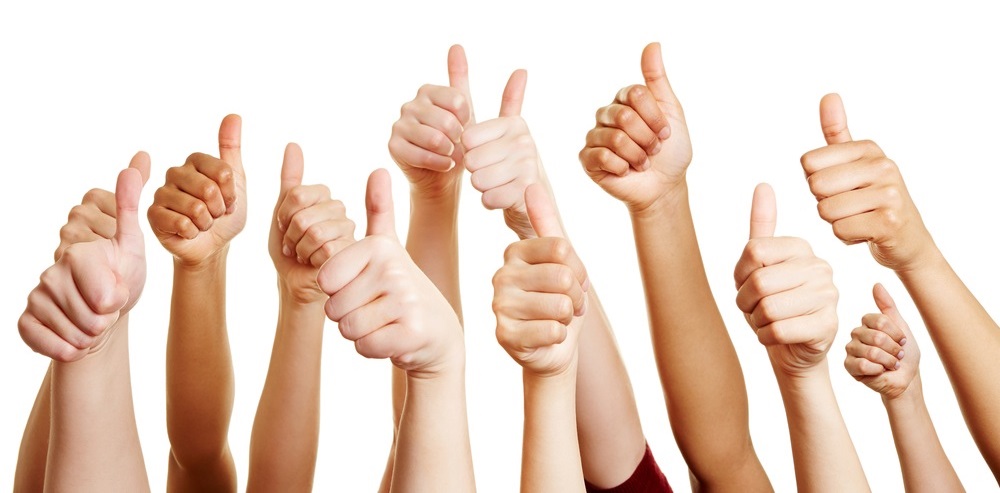Learn the magic recipe of effective acknowledgement

Our brains come somewhat unhelpfully pre-loaded with something the psychologists call the “negative bias”. Very simply put, our evolutionary biology has hard-wired our brains not only to lean towards a negative response when there’s one available to us, but also to amplify its seriousness or risk. Something to do with assuming, back when it was relevant, that the rustling in the undergrowth was a hungry sabre-toothed tiger rather than a straightforward consequence of a breezy morning.
In the modern world of appraising people, this negative bias can get double-stacked for really damaging results. Say I’m appraising Sue or something Sue has done. My negative bias draws me instinctively towards talking first about the things that she hasn’t done so well. Not only does Sue not hear the positive things I move on to later (her brain is just ringing too darn loud with the negative stuff), but her negative bias amplifies the import of what I was saying beyond the level I intended. In short, negative feedback gets seriously over-inflated very quickly. Poor old Sue.
As a perfectionist type, I confess that my brain is horribly attuned to the tiniest of mistakes. Show me a page of beautifully polished prose and my eye will go straight to the superfluous comma. Show me a beautiful piece of typographic design and I’ll notice something out of kilter with the font sizes. Critically, tell me your idea and I’ll immediately respond with the practical challenges and why it might not work. And there was a period of time in my business during which this tendency very much held sway. Before I woke up to the degree to which this approach really does not work, the net effect on my business was a near total paralysis, as people were so worried about my “negative first” response to an idea they had had that they just didn’t bother sharing it.
The solution is not to stop giving critical feedback altogether, but rather to balance it with going large on the positive stuff in order to keep things balanced and team members motivated. Some have done serious work on distilling this idea into an actual ratio.
In 2005, extensive research and mathematical modelling by Chilean psychologist Marcial Losada concluded very specifically that the ratio of positive to negative feedback needed to be greater than 2.9013 to 1. In very simple terms, what Losada was saying was that it takes about 3 positive comments to cancel out the detrimental effect of one negative comment. Dip below this threshold (dubbed the ‘Losada Line’) in a workplace context and performance quickly suffers. Losada’s paper posited in fact that ideally the ratio should be 6 to 1 if teams are to produce their very best work.
Nancy Kline, the creator of the Thinking Environment, had previously put a similar idea forward in 1999 in her seminal book “Time To Think”, settling on an appreciation to criticism ratio of 5 to 1. For her, it isn’t just a case of upping the positive purely in order to counteract the impact of the negative - for her, that ratio is a more accurate reflection of the wider reality, but as she says: “Society teaches us that to be positive is to be naive and vulnerable, whereas to be critical is to be informed, buttressed and sophisticated.”
Kline also talks about how important it is to be specific in our praise and appreciation. The more specific we can be, the more real it occurs to the recipient and the more effectively they can process it.
Any parents out there familiar with recent parenting books may have come across this idea of specificity in the form of “descriptive praise”, whereby you don’t just say to your 6-year-old daughter “You’re so amazing”, but rather you praise her for her specific victory or achievement, e.g. “It was really great how you cleared up your room so quickly and without even being asked”.
Not to suggest for a moment that your team members are in any way akin to 6-year-olds (of course not), but this technique is just as applicable to them. So it’s not so much “well done guys, awesome job” as “your resilience and your considered teamwork really helped you to nail this project on time and on budget, well done”.
That way, it’s much clearer what specific behaviour you are both commending from the past and would like to see more of in the future. And it’s much more likely to resonate and stick than something overly general (in kids, this “ooh you’re so brilliant” type of praise leads too easily to an unhelpful sense of entitlement).
Essentially, praise and acknowledgement play a key role in your people’s development and motivation. Praise often, praise specifically and praise first!
More Articles
Organisational health - the heartbeat of a business
Organisational health- the heartbeat of a business When we talk about business success, we often look first at strategy; the clever plan, the…
Rituals
Rituals surround us at work, in society and at home. They help manage emotions- think about what happens when someone dies…
How to take the right risks
Individuals and organisations can both benefit from a more entrepreneurial approach. Starting a new business, solving difficult problems…


